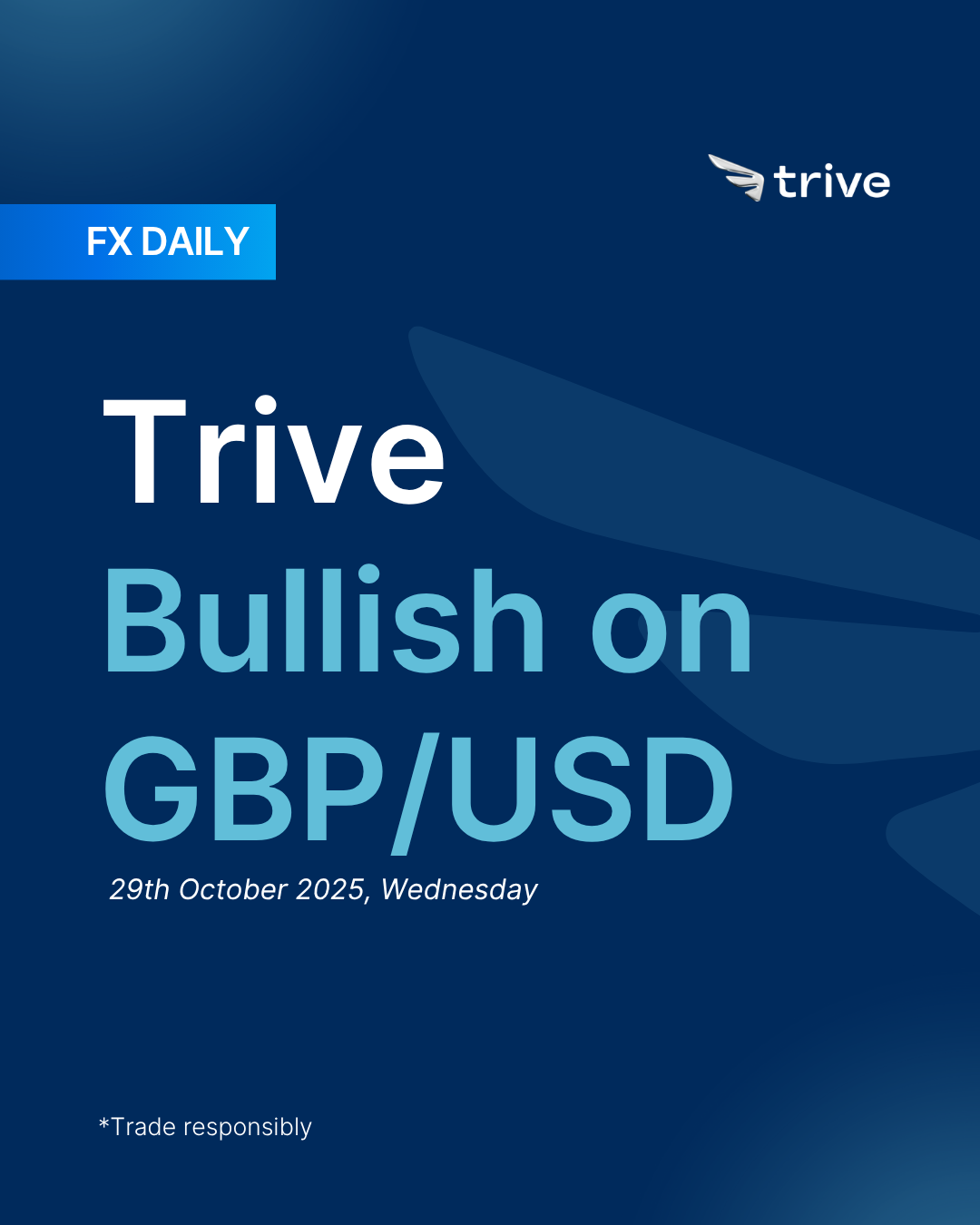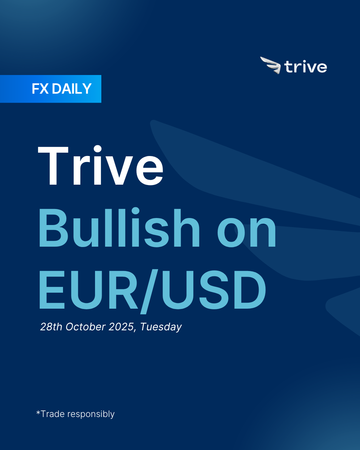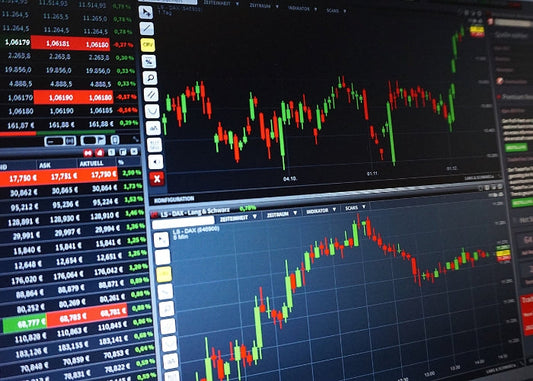FX Daily: Trive Bullish on GBP/USD

Sterling traded in wide swings last week, initially sold off after a much softer-than-expected CPI report before rebounding on stronger retail and PMI data. Inflation eased sharply (headline and core CPI both flat m/m), prompting markets to price in a BoE rate cut by year-end. However, upbeat September Retail Sales (+0.5%) and October Flash PMIs (Composite 51.1) restored some confidence that UK growth remains resilient.
GBP: Short term strength
Sterling traded in a volatile range through the week, driven by a sharp dovish repricing of Bank of England expectations that was later challenged by stronger economic data. The week began quietly, with GBP/USD consolidating near 1.3400, but sentiment shifted sharply mid-week after a much softer-than-expected September CPI report. The miss across all key inflation measures triggered a heavy sell-off in the Pound, sending it down to around 1.3305 as markets began pricing in a BoE rate cut before year-end. However, by Friday, the bearish tone eased as stronger Retail Sales and PMI figures signaled that the UK economy remained resilient, allowing Sterling to recover part of its losses and finish the week firmer.
The inflation data on Wednesday was the central event. Headline CPI came in flat at 0.0% month-on-month versus expectations of a 0.2% rise, with the annual rate at 3.8% instead of 4.0%. Core CPI also printed at 0.0% month-on-month and fell to 3.5% year-on-year compared to 3.7% expected. The results showed inflation easing faster than anticipated and reinforced expectations that the BoE could start cutting rates soon.
Friday’s data reversed some of the damage. Retail Sales for September rose 0.5% month-on-month compared to forecasts of a 0.2% decline, with sales excluding fuel up 0.6%. October Flash PMIs also beat expectations, with Manufacturing at 49.6 versus 46.6 expected and Services at 51.1, lifting the Composite PMI to 51.1 and signaling modest growth. Public sector borrowing figures came in slightly below forecasts at £20.2 billion.
Following the CPI release, markets rapidly increased the probability of a 25bps rate cut by December to around 75%, up from roughly 44% beforehand. However, the later data prompted some moderation in those expectations. The consensus view shifted toward the BoE holding rates steady in November to gather more data and reassess conditions in December, which was seen as a “live” meeting for a potential first cut. BoE policymaker Swati Dhingra, known for her dovish stance, added that US tariffs could weigh on UK growth, aligning with the softer policy narrative.
On the fiscal front, Chancellor Rachel Reeves signaled that her upcoming Autumn Budget on November 26 would aim to support lower rates by tightening public finances and reducing household costs, suggesting a coordinated effort between fiscal restraint and monetary easing.
Sterling ended the week firmer, rebounding from heavy mid-week losses after softer inflation data initially drove a sharp dovish repricing in BoE expectations. The CPI miss triggered aggressive selling as markets priced a rate cut before year-end, but stronger retail and PMI data restored some confidence and helped the pound recover into Friday. Despite that rebound, the broader tone remains cautious as disinflation gathers pace and relative policy support erodes against both the euro and the dollar, which strengthened on firmer US data and resilient risk sentiment.
Near term, weak bearish. The main driver is the dovish shift in BoE expectations after the soft CPI data, reinforced by signs of a loosening labour market and the steady drip of weaker UK surprises versus peers. Retail and PMI beats limited the downside but did not reverse the narrative, markets still view December as a live meeting for the first cut. Sterling therefore trades as a currency with easing risk priced in, leaving it vulnerable to further soft prints or stronger US data that extends the dollar’s advantage. Fiscal tightening plans ahead of the November 26 Budget may offer a small credibility boost but will also dampen growth, providing little net support. In relative terms, the euro and dollar both retain stronger domestic backdrops, while higher beta currencies outperform on trade deal optimism, keeping GBP caught in the middle. A hawkish BoE surprise or a material improvement in activity data could lift the stance toward neutral, but for now the bias remains weakly bearish.
Longer term, weak bearish. The medium run view is unchanged. Structural constraints such low productivity, fiscal fragility, and a softening labour market continue to weigh on Sterling’s fundamental profile. The BoE is edging closer to the start of an easing cycle just as the Fed and ECB hold steady, narrowing rate differentials and reducing carry appeal. While Reeves’s fiscal restraint could eventually compress the UK’s fiscal risk premium, it comes at the expense of growth, leaving rallies capped. Sterling is likely to underperform currencies with steadier inflation and stronger trend growth until the policy and data gap with its peers begins to close.
USD: Short at rally
The US Dollar traded in a choppy and mostly directionless range, with the DXY ending the week little changed despite rising geopolitical tensions and a key US inflation report. The week began quietly as the Dollar consolidated while markets digested President Trump’s softer stance on China. Mid-week, sentiment improved as the unwinding of the “currency debasement” trade led to a sharp decline in gold prices, and solid earnings from Zions Bancorp eased concerns about US regional banks.
On Thursday, the narrative shifted as the US imposed sanctions on major Russian oil companies, triggering a rally in crude oil and dominating the geopolitical landscape. The week ended with the September CPI report, which came in cooler than expected. This initially pressured the Dollar, pushing the DXY to a low near 98.72, but the move was offset by strong Flash PMI data. The surprise termination of trade talks with Canada added volatility, leaving the Dollar caught between dovish inflation data, solid growth signals, and a tense geopolitical environment.
The main driver of the week was the September CPI, which rose 0.3% month-on-month versus expectations of 0.4%, while Core CPI increased 0.2% against 0.3% expected. The yearly Core CPI also undershot at 3.0% compared to 3.1% forecasted, showing that inflation pressures remain contained and supporting the Fed’s easing outlook. In contrast, Flash PMIs were strong, with the Composite PMI at 54.8 and both Manufacturing and Services beating expectations, pointing to solid Q4 growth. Other data were limited due to the ongoing government shutdown, though existing home sales rose 1.5%.
The Fed remained in its blackout period, providing no new commentary, and market pricing for a 25bps cut at the October 30 meeting stayed unchanged.
On the geopolitical side, the US sanctioned Russian energy firms Rosneft and Lukoil, which sent oil prices higher and led to reports that China and India paused seaborne Russian oil imports. Meanwhile, US-China relations stayed mixed, with Washington considering new export controls in response to China’s rare earth policies, though high-level talks in Malaysia and a Trump–Xi meeting were confirmed for the following week. Late in the week, President Trump abruptly ended trade talks with Canada after criticizing a Canadian advertisement, souring North American trade relations. The unresolved US government shutdown continued to add policy uncertainty.
Market sentiment was mixed. Optimism returned early in the week as Zions Bancorp’s results suggested that credit stress was contained. The record plunge in gold prices supported the Dollar mid-week, reflecting a strong reversal of the “weak-dollar” narrative. By Friday, traders were torn between dovish signals from CPI and the growth resilience implied by strong PMI data, leaving the Dollar’s direction uncertain.
The US Dollar advanced this week, ending higher as strong US data, firmer oil prices, and persistent geopolitical tension outweighed a softer CPI print. Early weakness after the inflation report was quickly reversed as markets pared back aggressive Fed easing bets and risk appetite improved on US–China trade optimism. By Friday, the DXY had gained ground, supported by higher real yields and safe-haven demand tied to new sanctions headlines.
Near term, neutral with a bearish skew. The Dollar’s tone has turned more balanced. While September CPI confirmed that inflation pressures are cooling, the upside surprise in PMIs and steady consumption data showed that the US economy remains resilient. That combination reduced the urgency for rate cuts and allowed front end yields to edge higher, lending the Dollar support. Global sentiment has also stabilized, with optimism around renewed US–China talks limiting defensive demand for the yen and franc but lifting the greenback. The Fed is expected to lower the rates this week, and Powell’s tone will determine whether the next leg is higher or lower. A cautious message acknowledging softer inflation but firm growth would keep the Dollar rangebound. Only a distinctly dovish signal, such as explicit guidance toward more cuts would weaken it meaningfully, while a hawkish surprise could quickly lift the bias to bullish. However, if the trade war unexpectedly escalates again, worsening global growth prospects, the Dollar’s outlook would likely deteriorate as confidence and capital flows shift away from US assets.
Longer term, weak bearish. The structural outlook still favors gradual Dollar underperformance as US exceptionalism fades. The Fed remains closer to an easing cycle than its peers, and the accumulation of trade, fiscal, and credit risks continues to weigh on long-term confidence in US assets. Narrowing rate differentials, slower growth momentum, and uncertainty surrounding tariff policy and government funding suggest less room for the Dollar to sustain its strength. However, the path lower is likely to be uneven, given solid near-term growth and the currency’s reserve status.
 GBP/USD 4H
GBP/USD 4H
Disclaimer
This material is provided for informational purposes only and does not constitute financial, investment, or other advice. The opinions expressed in this material are those of the author and do not necessarily reflect the views of Trive International. No opinion contained in this material constitutes a recommendation by Trive International or its author regarding any particular investment, transaction, or investment strategy. This material should not be relied upon in making any investment decision.
The information provided does not consider the individual investment objectives, financial situation, or needs of any specific investor. Investors should seek independent financial advice tailored to their individual circumstances before making any investment decisions. Trive International shall not be liable for any loss, damage, or injury arising directly or indirectly from the use of this information or from any action or decision taken as a result of using this material.
Trive International may or may not have a financial interest in the companies or securities mentioned. The value of investments may fluctuate, and investors may not get back the amount they originally invested. Past performance is not indicative of future results.
For more information about Trive International, please visit http://trive.com/int
Additional Information
Investing involves risk, including the potential loss of principal. Diversification and asset allocation strategies do not ensure a profit or guarantee against loss. The content in this material is subject to change without notice and may become outdated or inaccurate over time. Trive International does not undertake any obligation to update the information in this material.
By accessing this material, you acknowledge and agree to the terms of this disclaimer. If you do not agree with these terms, please refrain from using this information.
कोई टिप्पणी नहीं
Home
Trive
TriveHub




0 टिप्पणियाँ